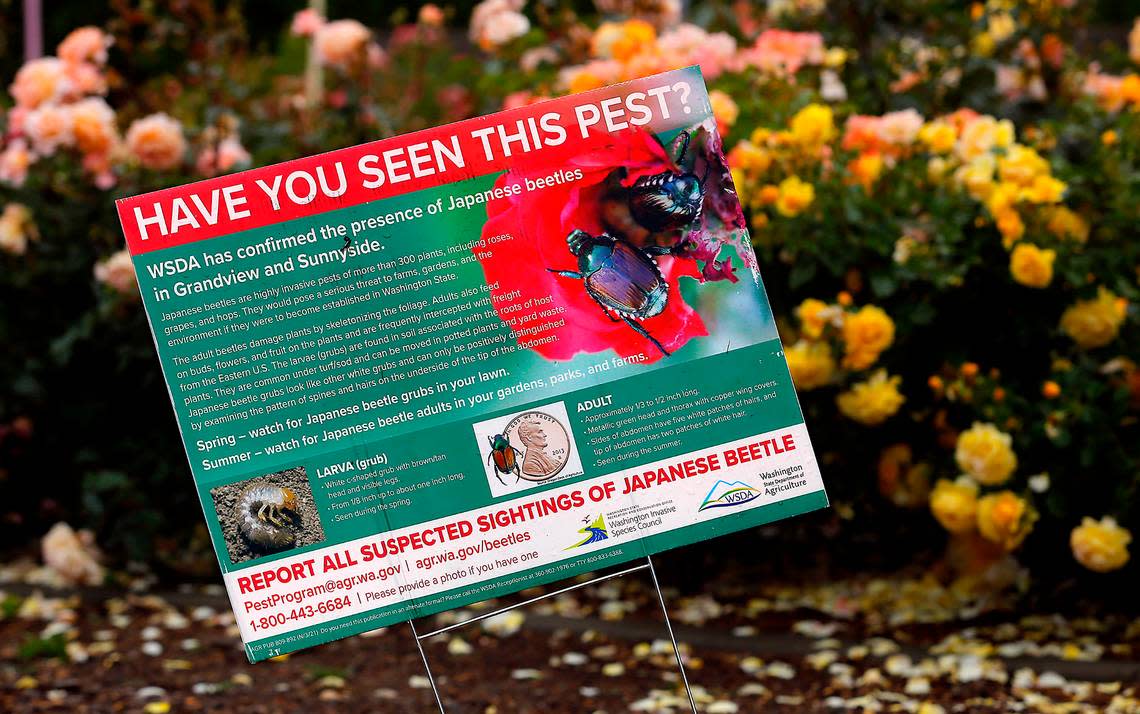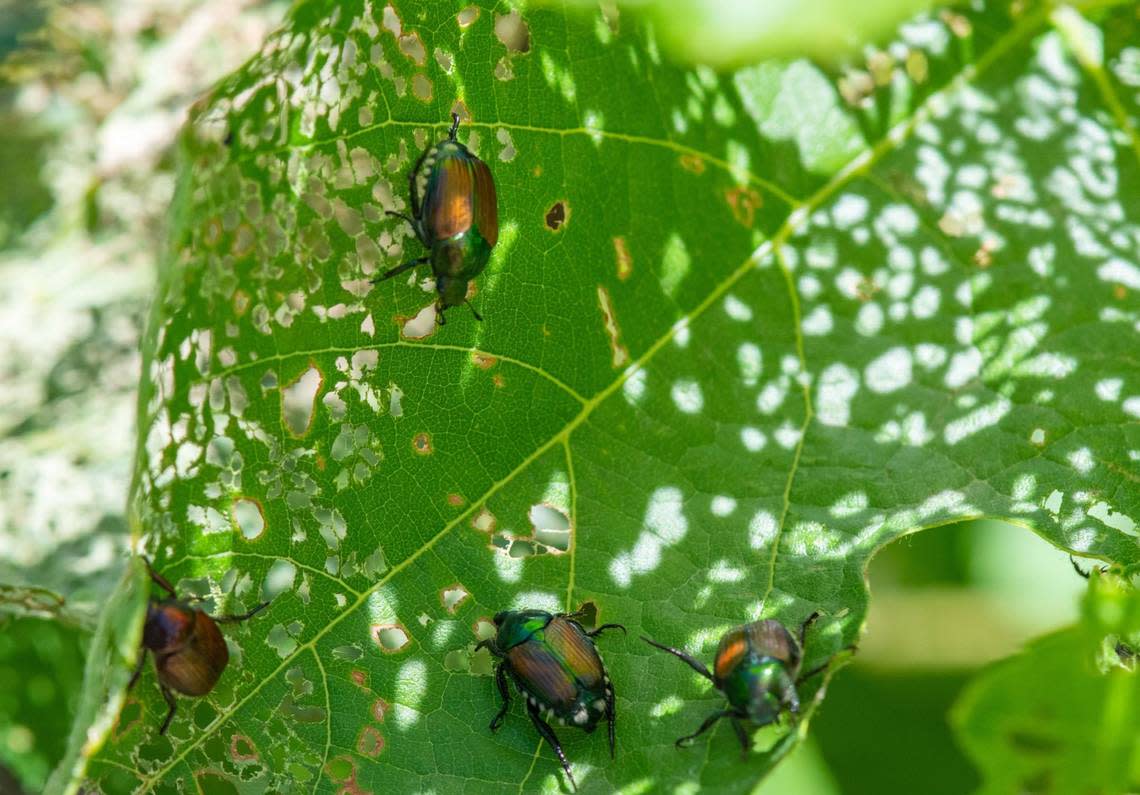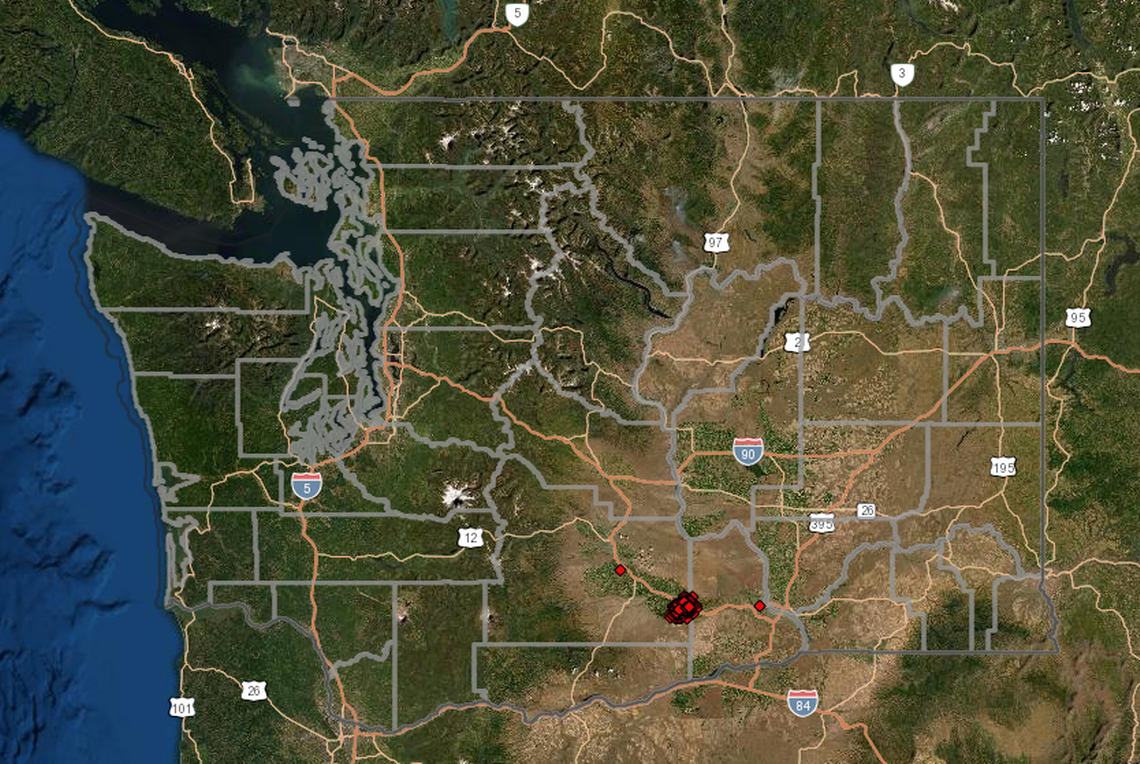Invasive bug found in Tri-Cities. Why rose gardeners to local farmers should be worried
A highly invasive beetle that feeds on roses, grapes and apples has been found in Richland, to the surprise and dismay of Washington state agriculture officials.
The Japanese beetle infestation appears to be growing exponentially in the state, the state Department of Agriculture said Friday.
With the beetles already proliferating in Grandview, the state in June proposed a quarantine area to start this fall to limit the movement of certain items out of the infestation area, including yard debris, grass and backyard compost.
But on Thursday officials were surprised by the discovery of a Japanese beetle during a routine check of a trap in Richland
The Washington state Department of Agriculture responded by immediately setting up more traps and checking nearby nurseries for the beetles.
Only a single beetle was found in Richland.
But the bugs can multiply and spread quickly, becoming an expensive problem.
The beetles feed on more than 300 ornamental and agriculture plants, turning the plants into skeletons as they consume the foliage, flowers or fruit. They also can attack grass roots, damaging lawns, golf courses and pastures, according to the U.S. Department of Agriculture.

In 2020, Washington State Department of Agriculture detected two Japanese beetles near Grandview and one near Sunnyside. In addition, a Grandview resident reported that she had numerous Japanese beetles devouring her roses that summer.
In 2021, the state Department of Agriculture trapped more than 24,000 beetles in and near Grandview, including across the Yakima County line into Benton County. Already this year about 8,300 have been caught in the same area.
Adding to the concern of state officials, a Japanese beetle was found in Wapato, 30 miles west of Grandview, earlier in the week.
That means the beetles have now been found over 65 miles of the Interstate 82 corridor, a major pathway for much of the state’s agricultural production, according to the state.
“Finding two detections so far from the original grid in two separate directions suggests the Japanese beetle population is spreading very quickly,” said Camilo Acosta, the state project coordinator for Japanese beetle eradication.
“The longer the invasive pest continues to thrive here, the more difficult and expensive it will be to control,” he said.
Japanese beetles expensive problem
The beetles are frequently intercepted in air cargo from the Eastern United States, according to the state Department of Agriculture.
“If Japanese beetles were to become established in Washington, it would pose a serious threat to gardens parks, and farms by destroying vegetation,” says the Department of Agriculture.
“Costly quarantines would also be established, making it increasingly difficult and expensive to move Washington agricultural products and even nursery plants within and outside of the state,” it said.

The Oregon Department of Agriculture estimated that if Japanese Beetle were to establish there, the economic impact to their crops, commodities and other related businesses could be approximately $45.5 million.
The beetles emerge — usually from lawns or other soil — in the spring. They feed on plants in the summer and then larvae over winter in the soil.
The first larvae of this year in the state was found on June 13 when a resident of Grandview discovered white C-shaped grubs in the soil of her boxed garden beds and submitted a report the state.
The state Department of Agriculture worked to remove the remaining grubs and set a traps on her property to capture any emerging adult.
Report Japanese beetles
State officials are asking farmers, orchardists and home gardeners in Yakima, Benton and Franklin counties to keep an eye out for the beetles, trap any they see and report them online at bit.ly/ReportBeetlesWA
The reports will help the state better understand how far the infestation has spread.

Residents of areas where the Japanese beetle have been found are asked not to move plants or soil from their property that might harbor the beetles or grubs.
“We also urge you to leave your potted plants, or treat them with an appropriate insecticide, before moving outside of the area,” Acosta said.
To find out how close to your property a Japanese beetle has been spotted, check the state’s map at bit.ly/WABeetleMap.
As the Washington state Department of Agriculture moves forward with a plan for a quarantine it has scheduled a public hearing at 10 a.m. Aug. 2. For how to attend virtually or in person in Grandview, go to bit.ly/GrandviewQuarantine.
As currently planned, the quarantine would extend from Yakima County into part of western Benton County.
